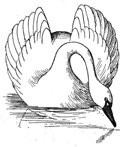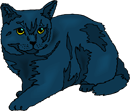Invasive Species |
 A species is a group of plants or animals that are alike and can produce offspring under natural conditions. Nobody knows how many different species of plants and animals there are on the Earth. That's because there are a lot of places scientists haven't been and some life is very small and hard to find. But still, every year scientists discover new species. A species is a group of plants or animals that are alike and can produce offspring under natural conditions. Nobody knows how many different species of plants and animals there are on the Earth. That's because there are a lot of places scientists haven't been and some life is very small and hard to find. But still, every year scientists discover new species.
Species can be native to their habitat, that means they occur naturally. Exotic species are not native to an area. Sometimes an exotic species will overwhelm native species, when this happens the exotic species is called an invasive species. Exotic species can harm native species by competing for resources. They can upset predator prey relationships and they can overrun a habitat. Many exotic species are introduced intentionally. Introduction of Exotic Species - Humans introduce some exotic species, others species expand their ranges naturally. | Did You Know? ... cats and dogs are exotic species! They are not native to North America. ... cats and dogs are exotic species! They are not native to North America.
... exotic species can take over an area and compete with native species for resources. What Do You Think? Click here to test your invasive species knowledge. Click here to test your invasive species knowledge. NatureFiles
Teacher's Guide
View OnlineIn the opening segment, Patrice looks at how invasive species can change an environment. She then joins Dave and they look at the impact milfoil has on aquatic communities. We then take an up-close look at the mute swan. Finally, Emily and Sam visit with Professor Jim Morin and his researchers from the Shoals Marine Lab and learn about an invasive seaweed in the waters off their island. Watch Online >> |

 Learn more about some animals that are exotic species.
Learn more about some animals that are exotic species. 